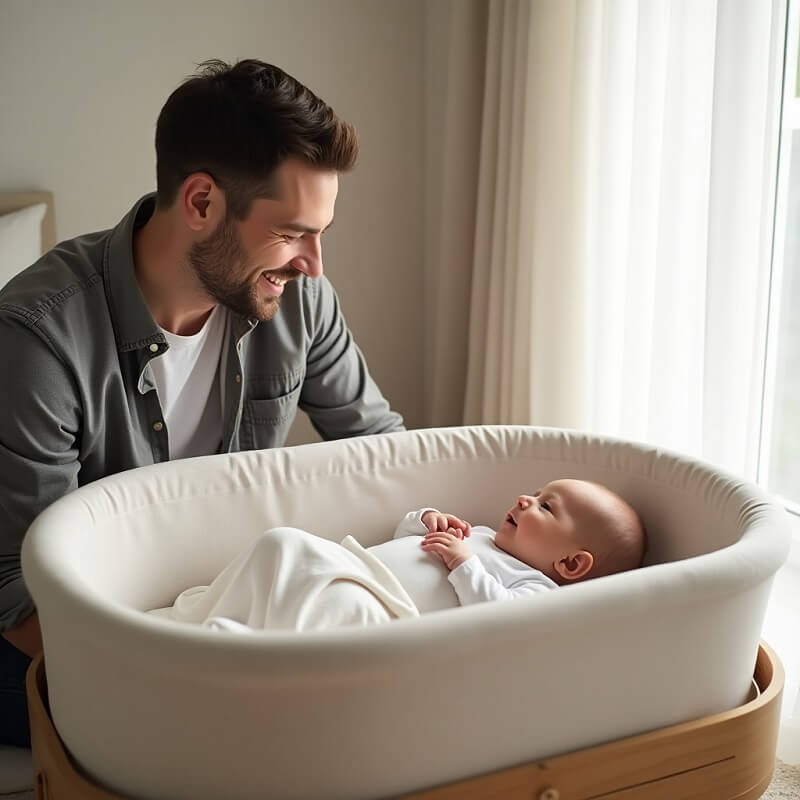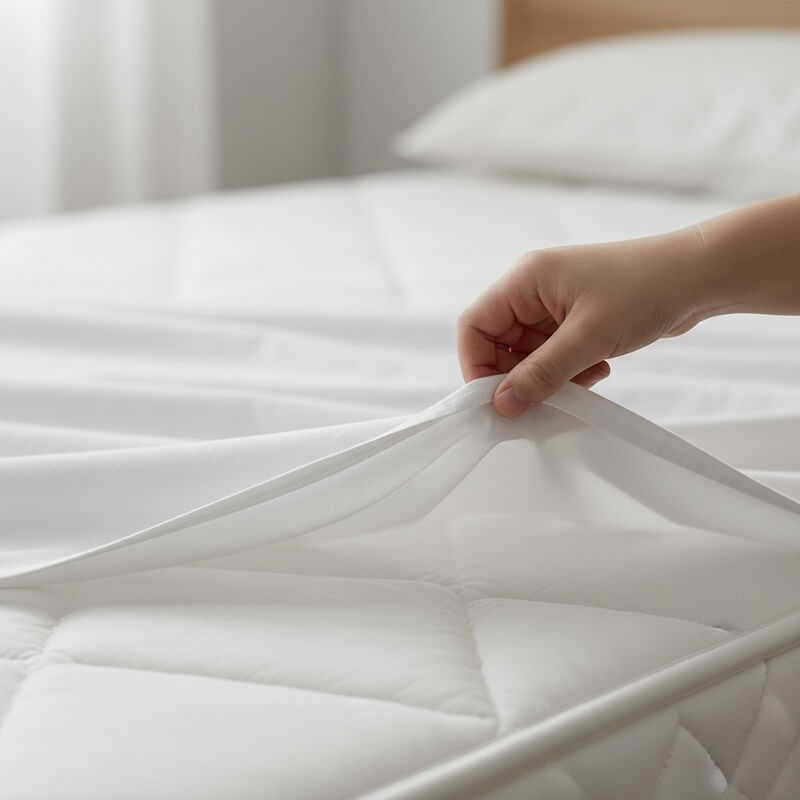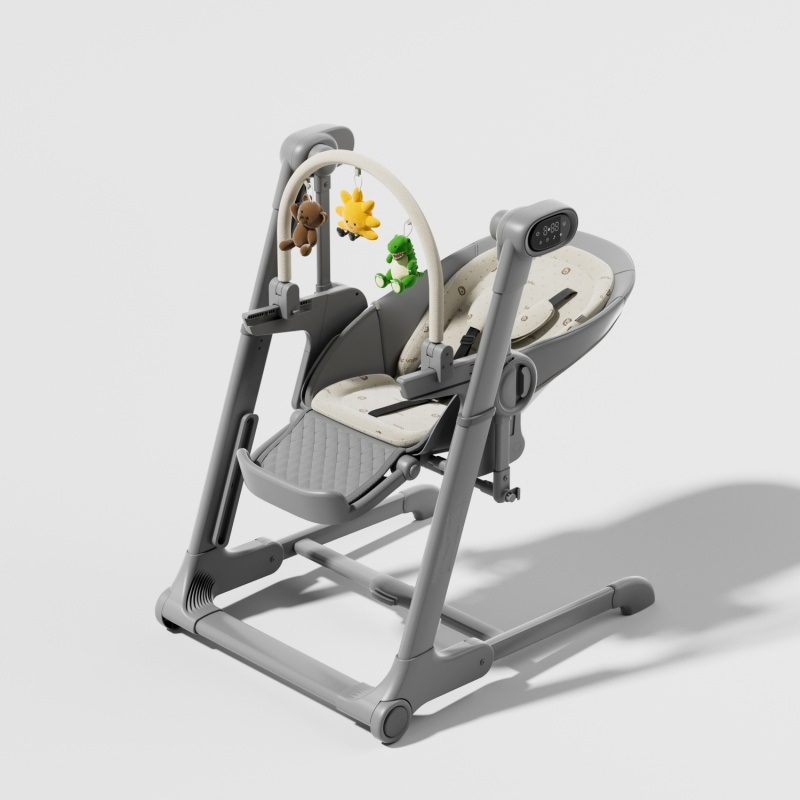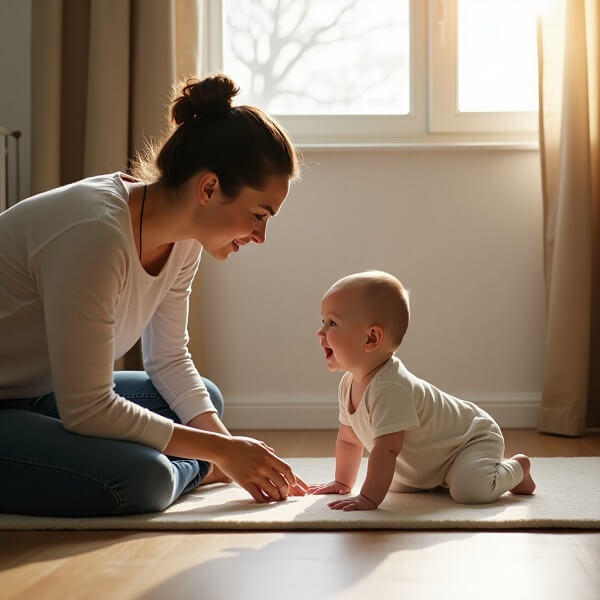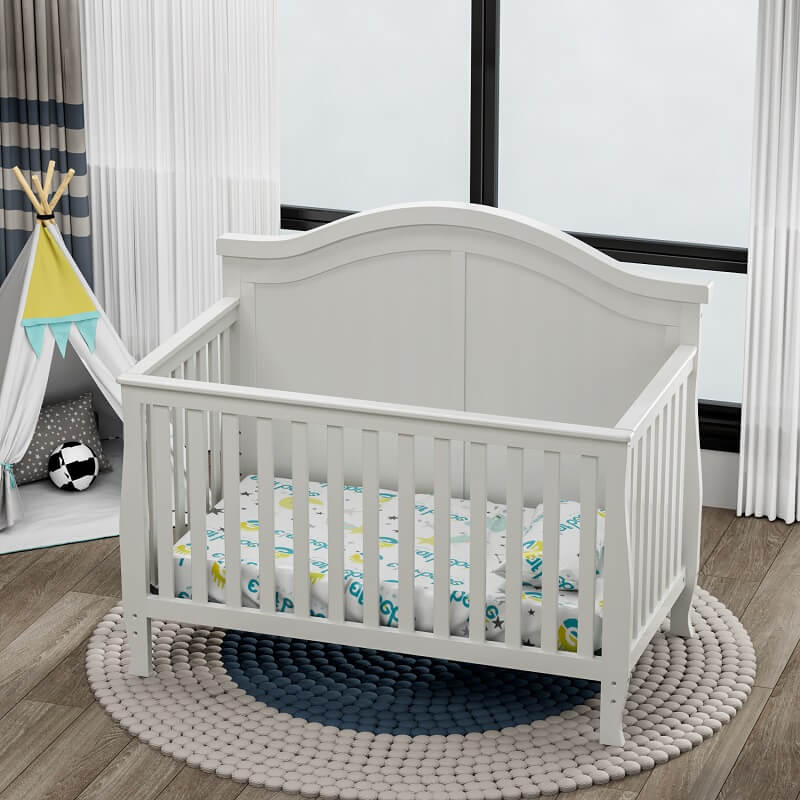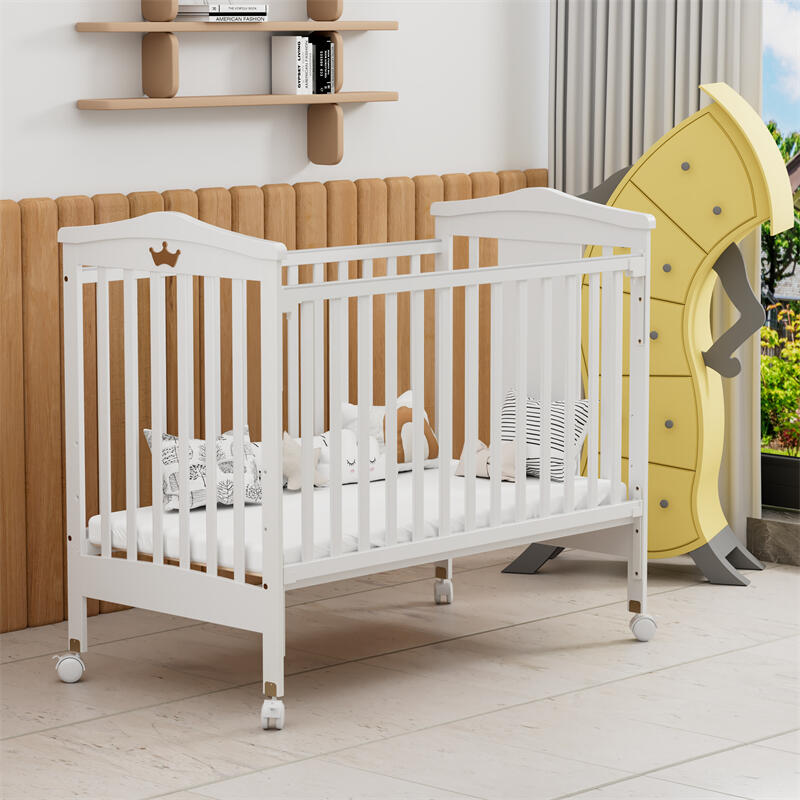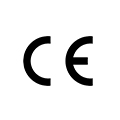Choosing a bassinet can feel complicated, and the main reason is often size. You’re not just picking a cute bed; you’re trying to fit a crucial piece of baby gear into your very adult bedroom, often right next to your own bed.
It’s true that the term “bassinet sizes” isn’t really standardized across the industry. Unlike full-sized cribs, manufacturers can make their models almost any size they like. This means the options can range widely, from tiny, compact mini-bassinets perfect for small city apartments or minimalist bedrooms to large, wheeled bedside sleepers that take up more floor space.
That’s what this detailed guide is for. We are going beyond a simple list of measurements. We’ll break down what a ‘standard’ bassinet size really means and explore all the popular types, including travel and bedside models.
What is the Standard Bassinet Size?
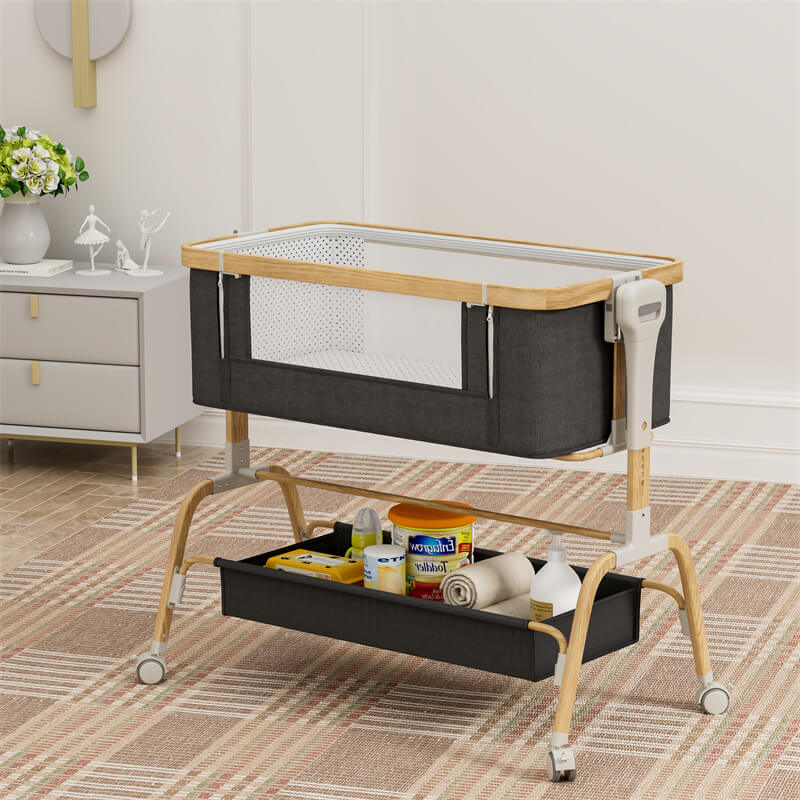
When you search for “standard bassinet size,” you discover a confusing truth: there is no single, precise measurement recognized by a federal or international standard. This is different from cribs, which have strict dimension rules.
For a bassinet, “standard” mostly means the size range that is most common in the industry. Most bassinets will have an exterior frame that is about 32 to 36 inches long (about 81-91 cm) and a width that typically falls between 17 and 21 inches (about 43-53 cm).
To help you understand the ‘typical’ range of bassinet dimensions on the market, we have compiled the data below. Keep in mind that these are rough estimates, and you must check the specific dimensions of your chosen model before you buy.
Typical Bassinet Size Range
| Feature | Typical Range | Metric Conversion |
| Exterior Length | 32 – 36 inches | 81 – 91 cm |
| Exterior Width | 17 – 21 inches | 43 – 53 cm |
| Mattress Length | 30 – 33 inches | 76 – 84 cm |
| Mattress Width | 15 – 17 inches | 38 – 43 cm |
| Recommended Max Depth | 10 inches (from mattress to top side) | 25.4 cm (from mattress to top of side) |
Why a Standard Mattress Size is Your Real Priority
Because of the lack of standardization, you need to focus on compatibility, especially when buying replacement sheets. A non-standard size bassinet may force you to buy expensive, proprietary sheets only from that one brand.
A product that has a certification from the JPMA (Juvenile Products Manufacturers Association) means it follows strict safety guidelines, including the proper thickness and fit of the mattress.
When you buy a bassinet, always check the exact mattress dimensions listed in the product specs, instead of just seeing the word “standard.” A thin, tightly fitted mattress paired with firm sides all around is the only standard you should truly be looking for.
Mini Bassinet Sizes
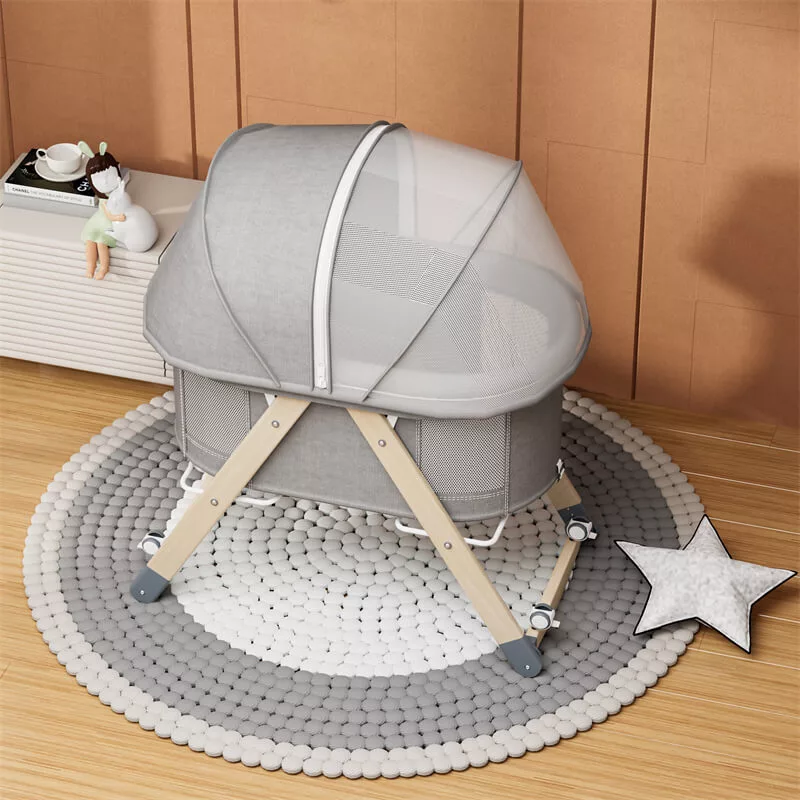
The Mini Bassinet is made for families in city apartments, those with limited space, or people who just want a snug fit next to their bed. As the name suggests, they are smaller than the ‘typical’ bassinets we just talked about. A mini bassinet is often five to ten inches shorter than a standard model, and it’s also narrower. This allows it to fit easily into corners where you have just a little bit of room left.
Because the frame is smaller and lighter, they are often much easier to move around a room or even push into the living room during the day. This gives you more flexibility to keep your baby close, which is a huge comfort for many new parents.
However, you must accept one trade-off: the smaller the bassinet, the less time your baby can sleep in it. If your baby is larger or grows quickly, you may need to move them to a crib sooner than you planned.
Travel and Folding Bassinet Sizes
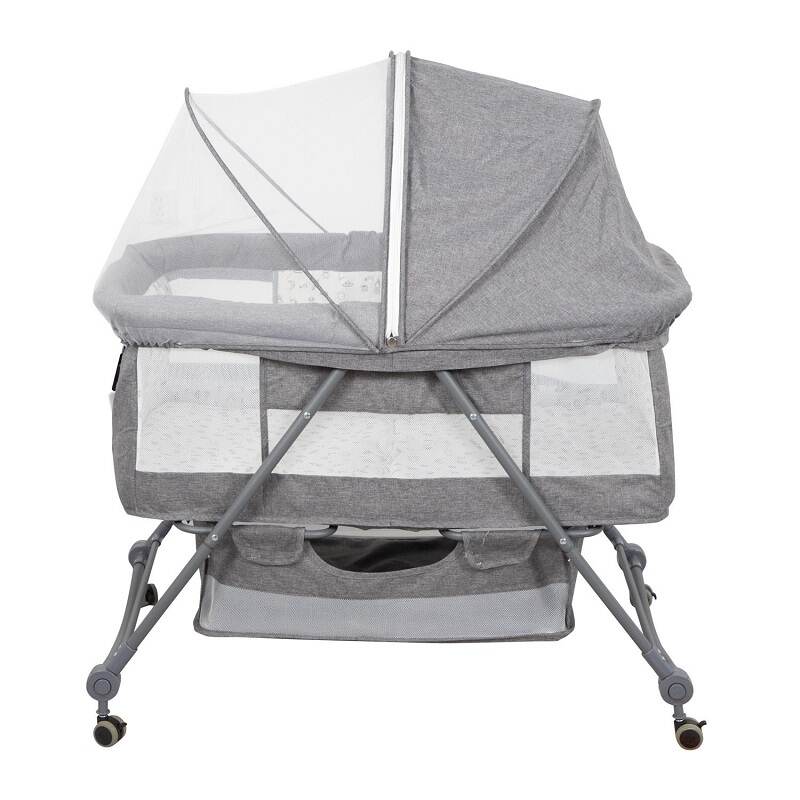
Travel and folding bassinets are designed for families on the go. Their goal is not to give you the most room in your bedroom, but to minimize the space they take up when stored. When you judge the size of these bassinets, you must look at two totally different dimensions: the In-Use Size and the Folded Size.
In-Use Size: When the bassinet is fully open, its size is usually similar to a mini or typical bassinet. However, you will notice their sides are thinner and more breathable, and the frame is made of lighter aluminum. This lets them fit easily into hotel rooms or rentals while traveling, but you still need to pay attention to the space they take up when open.
Folded Size: This is the real metric for how useful a travel bassinet is. A good one must fold into a compact package, ideally small enough to fit easily in your car trunk or, for air travel, even fit in a carry-on bag. Look for models that fold down to about 28 x 20 x 7 inches (about 71 x 51 x 18 cm). These are generally much easier to carry and store.
Bedside Bassinet vs. Moses Basket: Which Size is Right For Your Space?
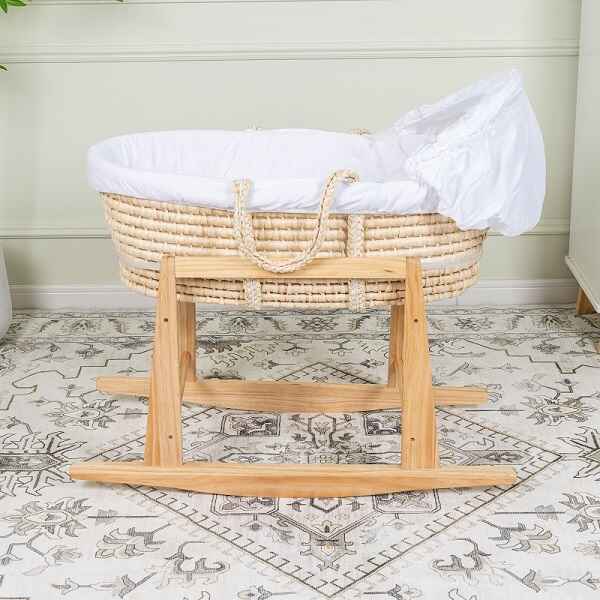
The Bedside Bassinet and the Moses Basket are two very popular ways to safely co-sleep, but they have huge differences in the footprint they take up in your bedroom. You must think about this before you buy.
Bedside Bassinet
Bedside bassinets are usually designed to adjust in height and have a side that drops or slides down, so they can sit snug against your mattress. Size-wise, they tend to be longer than standard free-standing bassinets to fit the connecting parts, and wider because they need a sturdy base to keep them from tipping.
Moses Basket
The Moses Basket is completely different. It is usually a light, small basket made of wicker or natural fibers, and it has a very tiny footprint. The average size for a Moses basket is about 30 inches long and 16 inches wide, which makes it the smallest footprint choice of all bassinet types. You can place it on a low stand, or even just set it on the floor or a large chair.
How to Choose?
If your bedroom space is extremely tight, the Moses basket is the winner because you can tuck it into any small corner. However, remember that the Moses basket usually has the shortest lifespan because it lacks depth and becomes unsafe as soon as the baby starts to move around.
In comparison, a bedside bassinet, while taking up more space, offers better value for parents who want the longest possible use and the easiest nighttime feeding due to its adjustability and seamless connection to the adult bed.
Will a Bassinet Fit in Your Bedroom? A Space Planning Checklist
You’ve measured the bassinet’s dimensions, and now the next step is to measure your bedroom to make sure it not only fits but fits safely. Just ‘tucking it in’ is not enough. You need to leave enough safe clearance around the bassinet so you can easily move around to care for your baby at night and avoid possible hazards.
As the American Academy of Pediatrics (AAP) strongly advises, the baby should sleep in the same room but on a separate sleep surface, ideally for the first six months or longer. This means your bassinet must be next to your bed, but should never share any surface with it. This requires careful planning.
Bedroom Space Planning Checklist
Minimum Clearance to Adult Bed: For non-bedside attaching bassinets, leave at least 24 inches (about 60 cm) of walking space. Bedside bassinets (like co-sleepers) must be snug against your mattress and strapped down, ensuring no gap larger than half an inch (1.27 cm) between the two.
Minimum Pathway Width for Night Trips: You and your partner will need a clear path to get out of the room at night. Make sure you have at least 30 inches (about 76 cm) of path clearance on the exit side of the bassinet to keep you from tripping when the lights are dim.
Avoid Hazardous Zones: No part of the bassinet should be placed near windows, curtain cords, blind cords, electrical wires, or air vents. These are all possible risks for strangulation or unstable temperatures.
Diaper Changing Clearance: While you should not change a diaper in the bassinet, you need enough space for a small, portable changing station or diaper caddy. Leaving 12 to 18 inches (30-45 cm) of side buffer space near the bassinet can make nighttime changes much smoother.
Understanding Bassinet Weight and Height Limits
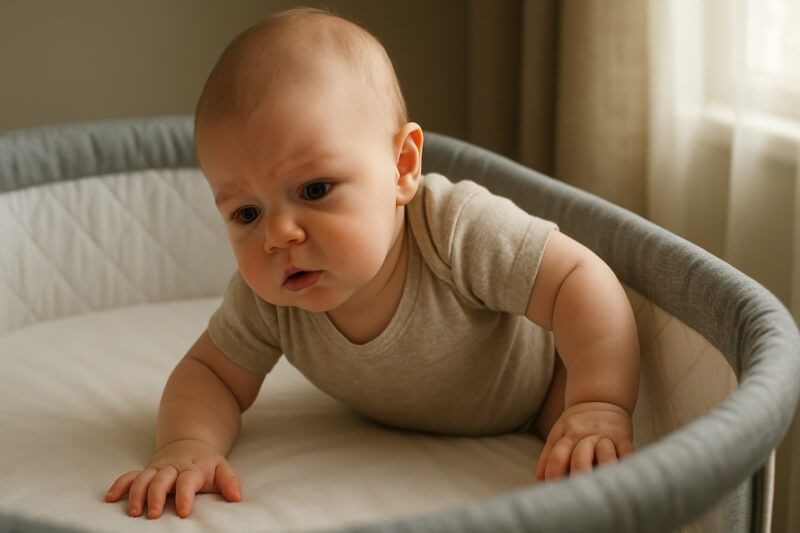
Understanding Bassinet Weight
Many parents only look at the manufacturer’s top weight limit, which is usually between 15 and 20 pounds (about 6.8 to 9 kg). But remember, this is not the only limit you need to worry about.
Most babies do not hit this weight limit until they are 4 to 6 months old. However, most safety experts and standards (like the ASTM) are clear: you must stop using the bassinet as soon as your baby starts to learn how to roll over, sit up, or push themselves up onto their hands and knees, no matter what their weight is.
Why is rolling the end? The sides of a bassinet are much shorter than a crib. The moment your baby can move, they risk tipping themselves out or getting stuck against the sides, which creates a serious risk of falling or suffocation. Because of this, the developmental milestone usually ends the bassinet’s lifespan earlier than the weight limit.
The Importance of Height Limits
Also, pay attention to the bassinet’s height adjustability, which is very important for bedside models. A good bedside bassinet must be able to adjust exactly to be level with your mattress.
If the bassinet is too low, you cannot easily reach your baby at night. If the edge is higher than your mattress, it can be a barrier or inconvenient when you pick your baby up. Treat measuring your mattress height as the final step in planning the bassinet size in your bedroom.
Conclusion
In the end, choosing the right baby bassinet is a decision about trust and peace of mind. It requires you to look past looks and marketing hype and focus on key things like materials, structure, and safety design. Your goal should be to find a product that not only meets your baby’s sleep needs but also gives your whole family a worry-free experience.
In the US, baby bassinets are controlled by strict standards like the CPSC and ASTM F2194. These standards demand that bassinets must have firm side walls, flat sleep surfaces, and meet strict limits on the angle of tilt to prevent suffocation risk.
Clafbebe: Partner with Us to Win the Next Generation Infant Sleep Market
Choosing a manufacturer means choosing certainty. Clafbebe is more than just a name on your product list; we are your behind-the-scenes expert manufacturer and reliable export partner, focused on making large amounts of baby furniture that meet the highest standards.[Wholesale/Customization Partnership] Contact Our B2B Team Today for our 2025 Bassinet Wholesale and Customization Guide.

